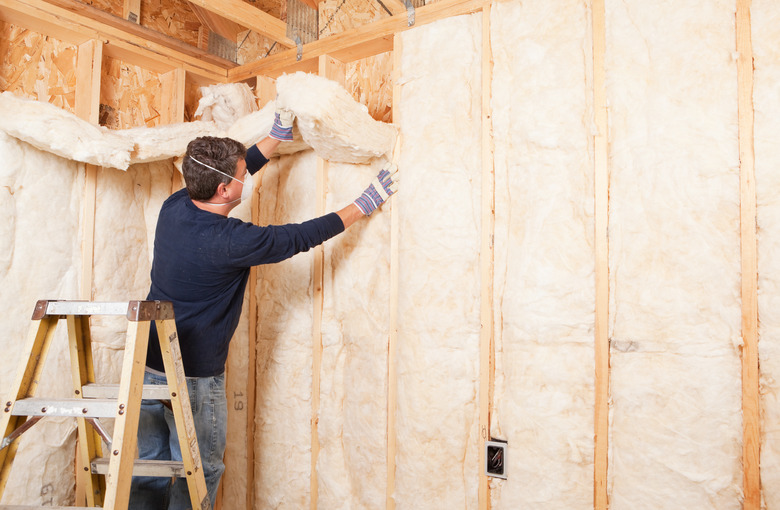What Is The Difference Between Faced & Unfaced Insulation?
Insulation is so important when finishing a renovation or a home. When done right, insulation will improve your energy rating, keeping you warm in the winter and cool in the summer. If it is done poorly, your seasonal comfort zones will be anything but comfortable. Part of getting it right means knowing when to use faced or unfaced insulation in walls.
Faced vs. Unfaced Insulation
Faced vs. Unfaced Insulation
"Facing" is a layer attached to roll or batt insulation as a vapor barrier to help protect the living space from excess humidity or moisture. It is basically designed to keep drywall dry. However, there are also insulations like spray-foam insulation that is designed to be moisture retardant anyway, when facing isn't required.
Insulation being unfaced doesn't mean it's a bad choice; it means ensuring that it's the right product for your space. Unfaced batt insulation is often used for beefing up the R rating, with the R rating being the insulation rating scale that says how much or how effective insulation needs to be in that space.
A space's R rating varies depending on the climate zone in which it is located. For example, an attic should have insulation quality and volume that is rated between R-49 and R-60 in Zone 7 regions like Buffalo, New York, where it gets downright icy in the winter. However, in the balmy Florida Panhandle with climate Zones 1 and 2, insulating attics from R-30 to R-60 is ideal since good winter insulation isn't critical, but insulation is meant to keep homes cool in the scorching summers.
The Finer Points of Faced Insulation
The Finer Points of Faced Insulation
With the facing being a moisture barrier on insulation, it's important to only install one layer of faced insulation. Multiple layers of facing inside the wall can trap moisture between them, which can cause big problems since moisture always needs somewhere to go. Once the facing is up, it needs drywall over it because facing is generally flammable. Examples of facing materials include kraft paper, foil kraft paper, vinyl and aluminum foil.
The facing should be on the side that meets with the living space. So, if you're installing it in a crawlspace ceiling, the facing aims toward the floor of the above room. If you're putting it in an exterior wall, the facing is on the interior side of the home where drywall will be laid. The same is true for an attic floor. The facing should aim down toward the living space.
Faced insulation has flanges on the outside of the batt that need to be stapled to the wall studs and joists. That's how the barrier is made effective. Without stapling, moisture still has a path into the room. It's also important that there be no air pockets in the insulation, as this is where the cold spots spring up in rooms. Where air pockets exist, it's a job for tufts or strips of unfaced insulation, including foam.
Different Kinds of Unfaced Insulation
Different Kinds of Unfaced Insulation
When it's batts or rolls of unfaced insulation, it's meant to be used to add R rating values but should be installed behind the faced insulation.
Kinds of insulation that don't involve facing of any sort include spray foam, blown-in insulation and rock wool. These products can be stand-alone if they have sufficient R rating, but sometimes they are used in conjunction to offer better protection. An example would be when unfaced rigid foam boards are used as primary protection but spray foam insulation is used to seal gaps and to create insulation around pipes and other design features.
